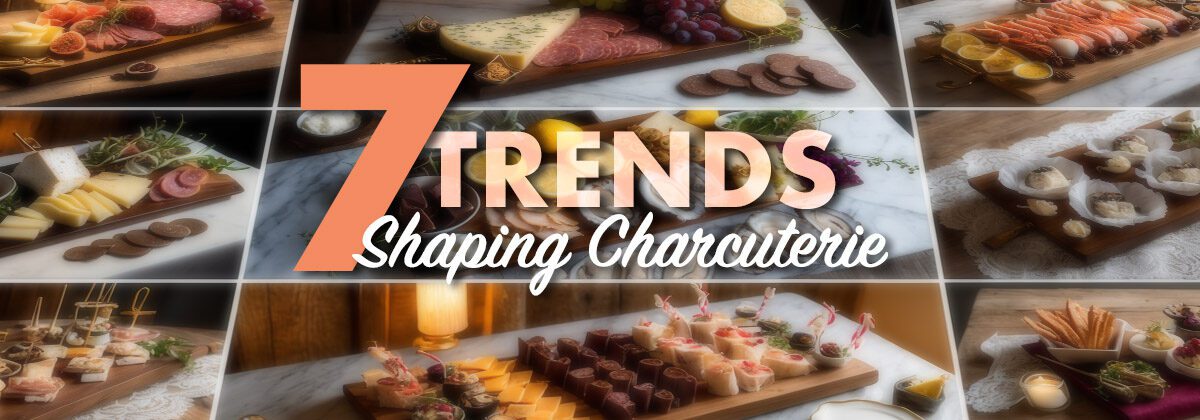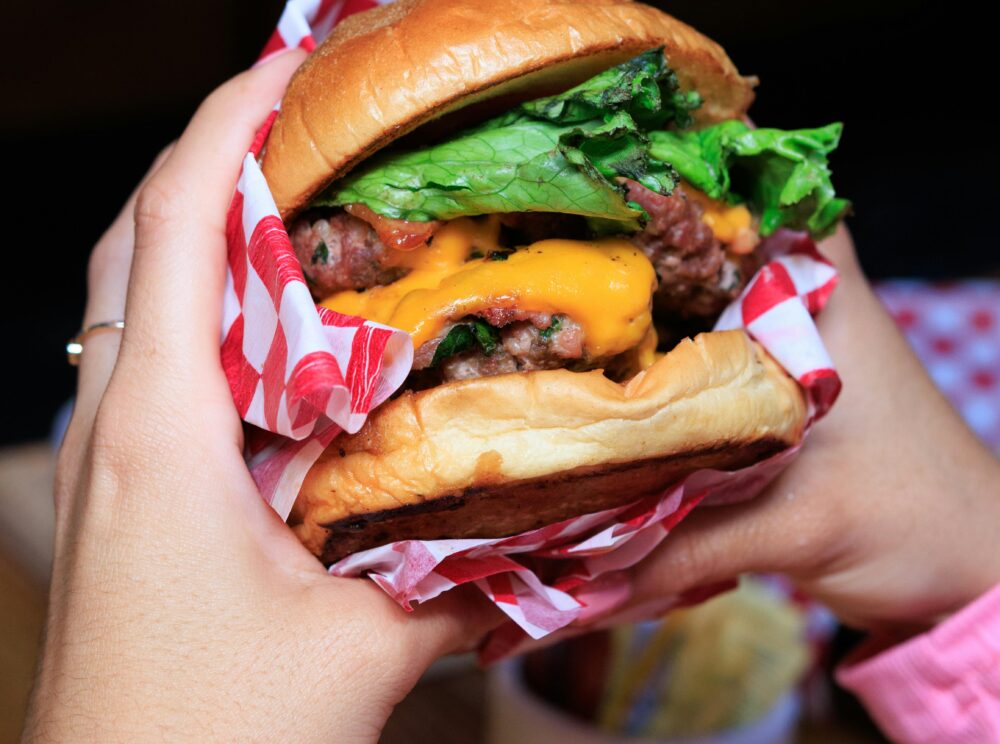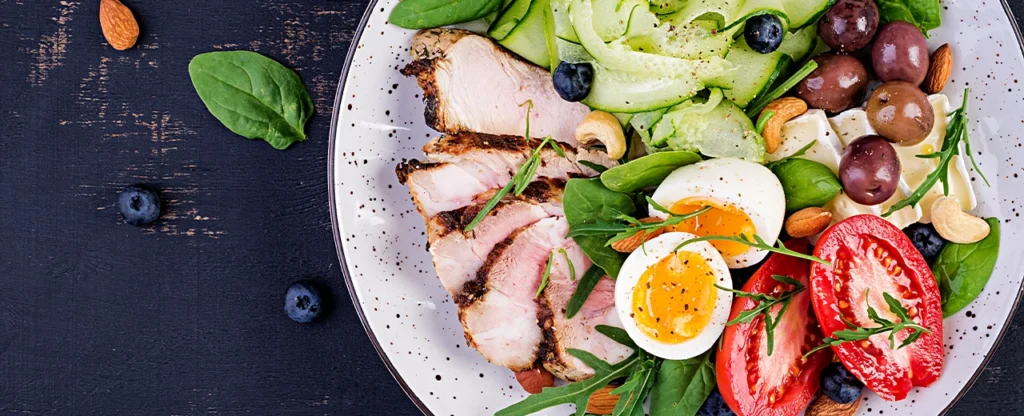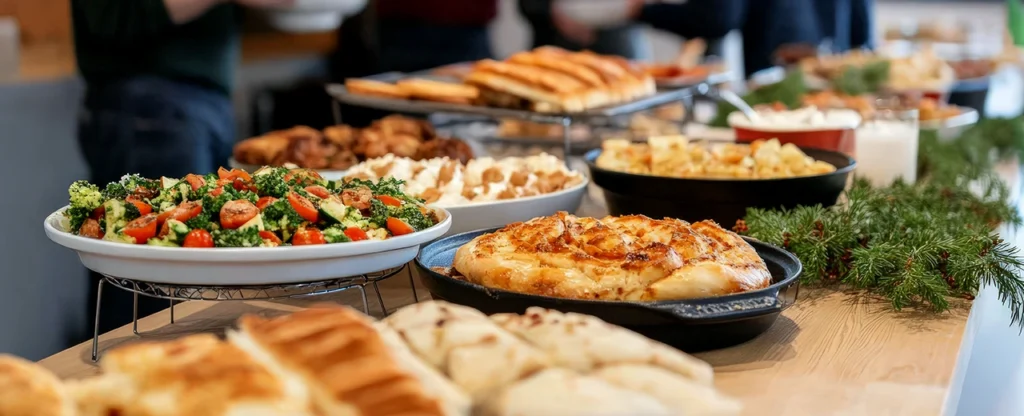
7 Trends Shaping Charcuterie Boards
Charcuterie trends are evolving in new and creative ways, providing ample opportunities to showcase your culinary artistry and impress your customers.
Charcuterie boards have long been a staple in the food world, offering a visually stunning and versatile appetizer option. Offering charcuterie makes economic sense, too. While the menu incidence of charcuterie boards is up 84% over the last 10 years, only 4.9% of menus in the U.S. currently offer them, suggesting there’s plenty of room for this trend to grow.1
- 52% of U.S. consumers are aware of charcuterie, up 15% over the last two years1
- Of those who have tried charcuterie, 76% like or love it1
- Casual dining and fine dining lead the way among segments offering charcuterie1
Today charcuterie has evolved far beyond meat and cheese boards. In this article, we’ll explore the hottest charcuterie trends, guiding you through seven innovative concepts that can set your establishment apart.
1. Charcuterie boards with a twist
Charcuterie trends are pushing the boundaries of traditional platter concepts, giving chefs and restaurant owners the opportunity to stand out with truly unique offerings. By incorporating unconventional elements into your charcuterie boards, you can make a bold statement and attract customers hungry for something new. Here are some fresh ideas for charcuterie boards with a twist:
- Dessert charcuterie boards: Combine the visual appeal of a charcuterie board with the indulgence of dessert by offering sweet options such as chocolate, fruit, and various confections, paired with complementary cheeses and nuts. While dessert boards are found on less than 1% of U.S. menus, 20% of consumers have tried them. They’re also trending on social media, with more than 25,000 posts tagged with #dessertboard.1
- Brunch charcuterie boards: Create a memorable brunch experience by offering a charcuterie board featuring breakfast items like smoked salmon, bagels, cream cheese, fruit, and granola.
- Butter boards: Basic butter boards typically display an array of dairy butter adorned with sea salt, herbs, spices, and small pieces of fruit or vegetables. Many chefs take it further by using various types of butter as the foundation and incorporating an extensive selection of toppings and dippers.
- French fry charcuterie boards: Embrace the fusion of comfort food and creative presentation by designing a charcuterie board centered around various styles of french fries, accompanied by an assortment of toppings and dipping sauces.
2. Themed charcuterie boards are making waves
Themed charcuterie boards offer a creative way to cater to specific customer preferences and celebrate special occasions. By designing a charcuterie board around a central theme, you can create a cohesive and memorable experience for your customers. Some popular themes to consider include:
- Seasonal boards: Reflect the flavors of each season with carefully selected ingredients, such as fresh summer fruits, autumnal roasted vegetables, or wintery cured meats.
- Regional boards: Showcase your restaurant’s unique geographic location by featuring local ingredients and flavors that celebrate your region’s culinary heritage.
- Dietary-focused boards: Cater to the needs of your customers by offering charcuterie boards designed for specific dietary preferences or restrictions, such as vegan, gluten-free, or keto-friendly options.
3. Non-traditional charcuterie ingredients find an audience
Charcuterie boards are expanding beyond the traditional selection of meats and cheeses to include a diverse range of non-traditional ingredients. This trend provides an opportunity for restaurants to showcase their creativity and offer customers a unique gastronomic experience. Consider incorporating the following non-traditional ingredients into your charcuterie boards:
- Seafood: Fresh or smoked seafood, such as salmon, shrimp, or oysters, can add an elegant touch to your charcuterie board and appeal to pescatarian customers.
- Plant-based alternatives: Offer plant-based meat and cheese substitutes to cater to vegan and vegetarian customers while reducing your establishment’s environmental impact.
- Exotic fruits and vegetables: Incorporate lesser-known fruits and vegetables to create a visually stunning and flavorful board that will intrigue and delight your customers.
4. Interactive and DIY charcuterie boards create a unique dining experience
The trend of interactive and DIY charcuterie boards is gaining traction, offering customers a fun and engaging dining experience. By allowing patrons to customize their own charcuterie boards, you can create a personalized and memorable experience that sets your restaurant apart. Here are some tips for implementing interactive and DIY charcuterie boards in your establishment:
- Provide a diverse selection: Offer a wide array of ingredients, including various meats, cheeses, fruits, vegetables, and accompaniments, to cater to a broad range of customer preferences.
- Create an inviting display: Arrange your ingredients in an aesthetically pleasing and accessible manner, using attractive serving platters, bowls, and utensils.
- Offer guidance: Provide suggestions and pairing recommendations to assist customers in creating their perfect charcuterie board, either through menu descriptions, table cards, or knowledgeable staff.
5. Emphasizing sustainability with charcuterie
With an increasing focus on sustainability and eco-consciousness, incorporating environmentally friendly practices into charcuterie board preparation is more important than ever. Chefs and restaurant owners can embrace this trend by:
- Reducing food waste: Practice responsible portion control and utilize every part of your ingredients to minimize food waste. Get creative with your garnishes and accompaniments, using items like pickled vegetable scraps or repurposed fruit peels.
- Using eco-friendly serveware: Opt for reusable, recyclable, or biodegradable serving platters, utensils, and napkins to minimize the environmental impact of your charcuterie offerings.
The charcuterie trends provide an exciting opportunity for chefs and restaurant owners to showcase their creativity and culinary expertise while setting their establishments apart from the competition. By embracing themed boards, non-traditional ingredients, interactive experiences, innovative concepts, and sustainable practices, you can create a memorable and enticing charcuterie experience for your customers.
6. Global fusion charcuterie boards
Embrace the culinary diversity of the world by creating charcuterie boards that feature international flavors and ingredients. This trend allows restaurants to showcase their multicultural inspiration and appeal to adventurous eaters. Some ideas include:
- Asian-inspired boards: Incorporate elements like cured duck, pickled vegetables, kimchi, and rice crackers.
- Mediterranean boards: Feature ingredients such as olives, hummus, feta cheese, dried fruits, and flavors like sumac and za’atar.
- Latin American boards: Include items like chorizo, queso fresco, plantain chips, and guacamole. Many of which you can find on our Mexican Cuisine page. Combining two ideas, consider the appeal of a Latin American dessert board with Horchata Bites and dipping sauces.
This trend not only adds variety to your menu but also caters to the growing interest in global cuisines among diners.
7. Charcuterie-inspired main courses
Take the concept of charcuterie beyond appetizers by offering charcuterie-inspired main courses. This trend allows chefs to elevate the charcuterie experience into a substantial meal. Some ideas include:
- Charcuterie flatbreads or pizzas: Top flatbreads or pizzas with an assortment of cured meats, cheeses, and complementary ingredients.
- Charcuterie-stuffed entrees: Create dishes like chicken breast stuffed with prosciutto and cheese, served with typical charcuterie accompaniments.
- Charcuterie bowls: Offer hearty bowls featuring a base of grains or greens topped with an assortment of charcuterie items and accompaniments.
This trend allows restaurants to capitalize on the popularity of charcuterie while offering more substantial options for diners looking for a full meal.
1Datassential, March 2023









